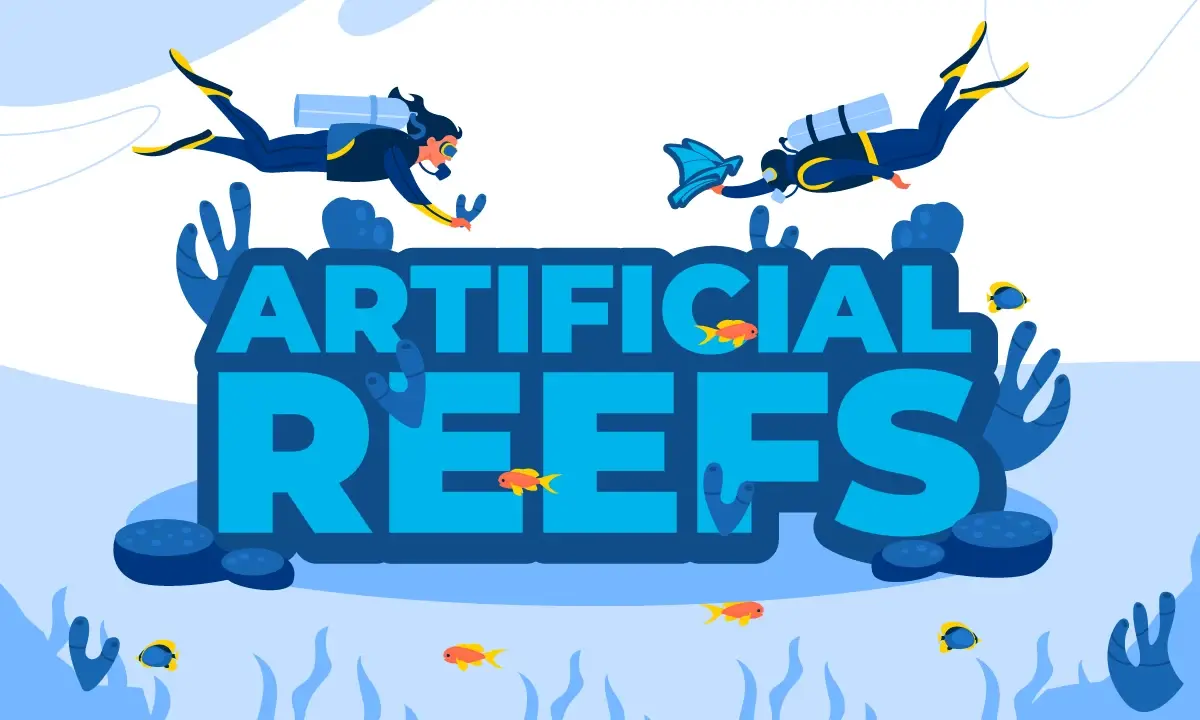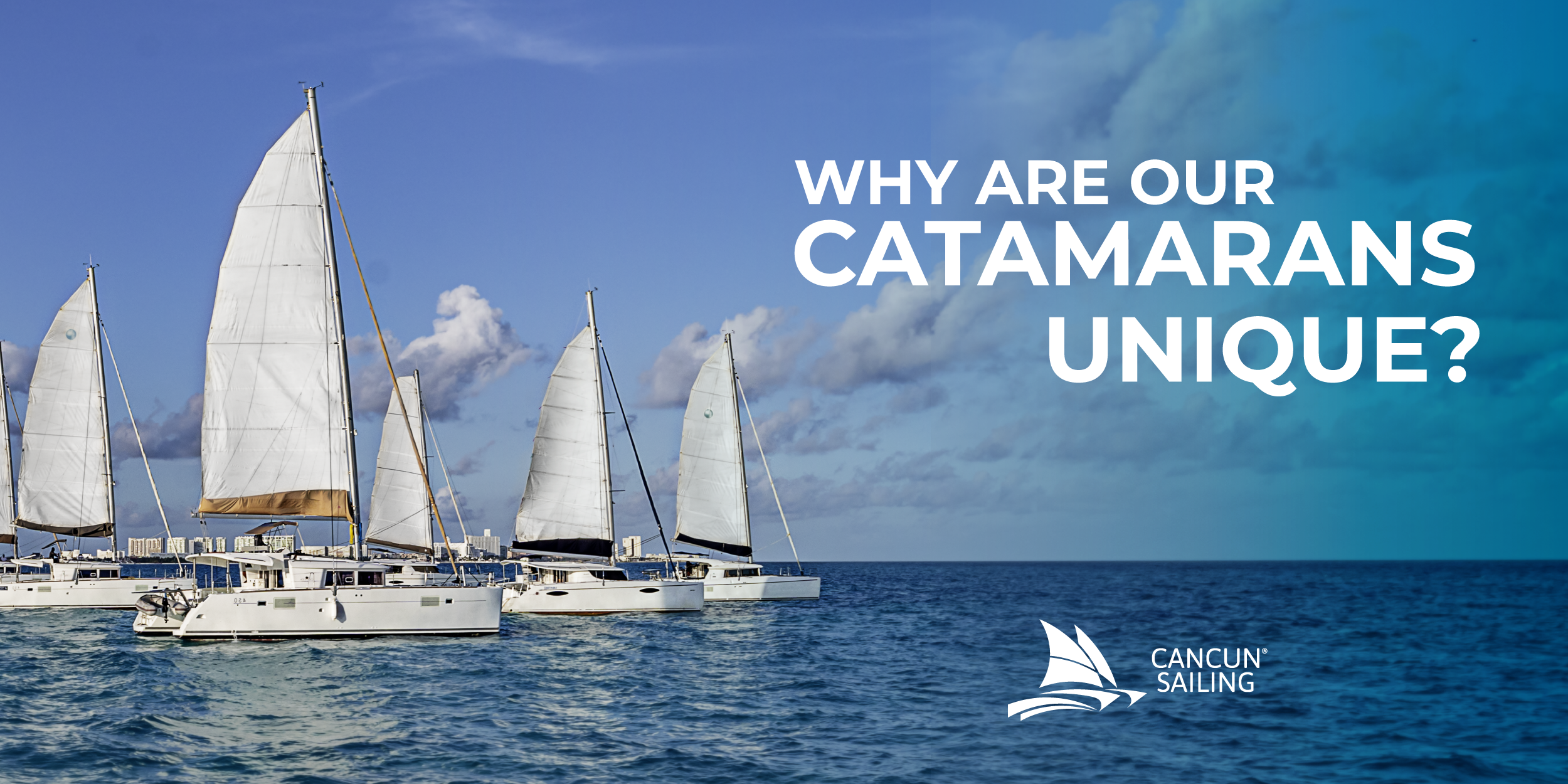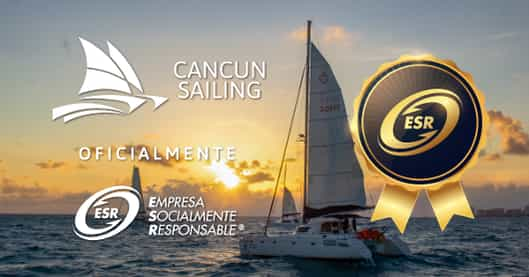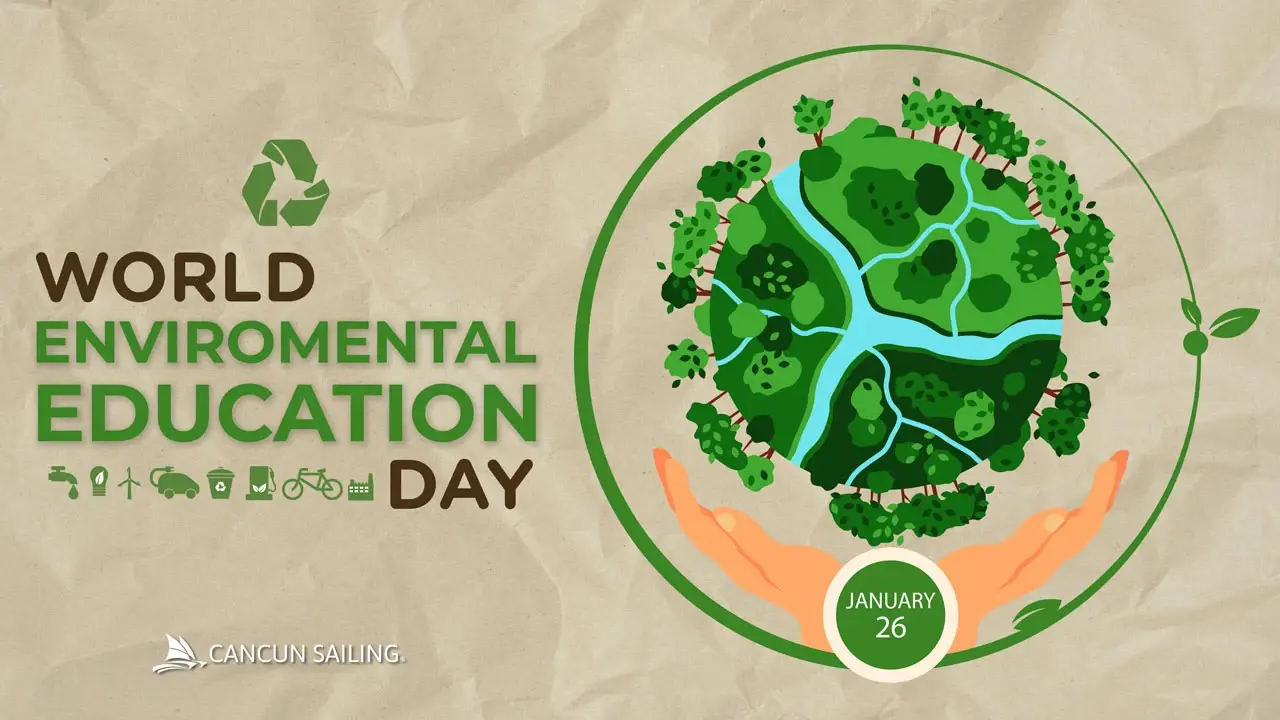4 min read
The artificial reefs that came to rescue Cancun's Caribbean coral
Diana Gonzalez
:
Jun 5, 2024 1:08:02 PM

Latest initiative: Sinking of artificial habitats 🪸🐠.
The Nautical Associates of Quintana Roo successfully sank artificial habitats in an area of the “El Meco” reef. This project, resulting from months of planning and collaboration with marine experts, aims to provide a safe and suitable environment for aquatic species to thrive. The new habitats, specifically designed to maximize the colonization of corals and other marine life, represent a significant step towards the restoration of the local marine ecosystems.
🛥 The Asociados Náuticos de Quintana Roo. Conservation leaders
The Asociados Náuticos de Quintana Roo has implemented several successful projects of artificial corals in the region, of which Cancun Sailing is part as one of the companies that add to this and other projects that benefit not only responsible tourism but also the proliferation of life in the ocean.
The efforts of the Asociados Nauticos de Quintana Roo include:
-
Collaboration with experts: Work with marine biologists and scientists to design and place artificial corals effectively.
-
Our commitment to education is a cornerstone of our work. We conduct workshops and educational programs, empowering the community with knowledge about the vital importance of coral reefs.
-
Monitoring and maintenance: Structures are constantly monitored to ensure their efficiency and adaptation as needed.
In addition, it should be noted and recognized that “El Meco” reef is the only aquatic park protected and monitored by a non-governmental organization.
%20(1).jpg?width=720&height=420&name=Dise%C3%B1o%20sin%20t%C3%ADtulo%20(11)%20(1).jpg)
The first artificial reefs in Quintana Roo were sunk in 2019, which has given way to the creation of more habitats in favor of the care of our oceans.
The Asociados Nauticos de Quintana Roo have worked with other associations and agencies in pursuit of the care of the marine environment, especially in the Quintana Roo area, of which they are part, along with other responsible tourism agencies. This has given way to collaboration in construction projects and placement of artificial habitats for coral growth, such as the one carried out last May 31 with the Net-Zero AragoReef structures placed in the reef area “El Meco.”

AragoReef Net-Zero structures out of water
Structures and modules
Who is responsible for creating these modules?
The NGO RAC (Reef Aquaculture Conservancy) developed these structures, known as “Net-Zero Arago Reef,” which work to restore and grow coral reefs.
The transformative impact of the Blue Ocean Credits Program (BOCP) makes all these significant actions possible.
Funded by: Net Zero Research Fund 2023 of the Scotiabank Candá Center of Excellence for Climate Change.
It is worth noting that RAC is the only Mexican NGO to receive support from the Net Zero Research Fund for two consecutive years. RAC is committed to restoring and conserving our country's coral reefs.
How are the structures built? 🤷🏽
The structures are organized into three modules, each with seven structures. Assembly is like a jigsaw puzzle, ensuring each piece is in the right place to facilitate future evaluations.
The modular design also helps replace more pieces quickly and easily—for the experts in charge of assembling each module, it is almost as easy as assembling a Lego set.
Diversity of materials: Due to their compatibility with the environment, not all structures are made of the same material and texture, which requires a specific order in their assembly.
How is the Net-Zero AragoReef artificial habitat installation process?
Phase 1 - Disassembly of ground structures to facilitate relocation
The structures are disassembled on land, thus ensuring that they are efficiently transferred to the vessels for sinking.
Phase 2 - Sinking of the pieces in the reef area “El Meco.”
With expert support, the pieces are carefully sunk in “El Meco” area. The bases are securely anchored, a testament to the care and expertise involved. This ensures their stability for the safety of other nearby habitats and the species that live in the vicinity.

Anchoring of bases for Net-Zero AragoReef structures
Phase 3 - Coral pruning
The pruners move the corals from the nursery in Bajo Pepito in collaboration with CONAP, one of the largest nurseries in Mexico and the Caribbean. The nursery pruning is done with total caution so as not to interfere with the development of the natural biota, and an experimental sample is collected to observe its adaptation.

Relocation of coral pruning to the grafting area
Phase 4 - Assembly of parts inside the Water
Once the necessary elements are ready, the creative and harmonic part of the assembly of pieces is carried out, ensuring adequate spaces where the organisms can thrive. At the same time, people in charge of each activity are selected for leadership and assembly, providing order and coordination for this activity.
Phase 5 - Coral seeding
Once the structures are assembled, the coral collected during pruning is grafted with total care to be in an optimal position for reproduction and growth.

Underwater assembly of structures, piece by piece.
Following this, monitoring is carried out to record the changes that have occurred in the habitat and its environment and to determine whether maintenance of any of the structures' parts is necessary for optimal functioning and development within the habitat in which they are located.
Species refuge:
🪸 At first, the corals may pale due to the stress to which their environment has been subjected, as the structures are merely artificial; however, it takes about a month for them to recover and begin to grow.
🪸 Remarkably, within a span of two months, the structures start to fulfill their purpose, attracting the first batch of fish seeking refuge in their safe haven.
🪸 In three months, the first significant coral growth within the modules is expected. In six months, more fish and other species are expected to visit.

📸: Karla Navarro
Once the structures are underwater, hydrophones and temperature sensors are installed to constantly monitor them.
Importance of reefs and their presence 🪸
Coral reefs are essential for marine biodiversity and coastal protection. Still, they are in danger due to climate change, pollution, and other human activities. The Asociados Nauticos de Quintana Roo, along with agencies such as Cancun Sailing, have taken an active role in the conservation of these vital ecosystems through the use of artificial corals, supervision of responsible snorkeling practices, and patrolling the area, among other things.
🌺 What are artificial reefs?
Artificial corals are man-made structures designed to mimic the characteristics of natural coral reefs. They are made of durable and environmentally safe materials, such as concrete and steel, and are strategically placed in areas where natural reefs have been damaged or destroyed.
🌿 Benefits of artificial reefs
-
Habitat restoration: They provide a new home for diverse marine species, promoting biodiversity and well-being for each species that takes this space as its habitat.
-
Coastal protection: They act as natural barriers, reducing erosion and protecting coasts from storms and hurricanes.
-
Sustainable tourism: They create new diving and snorkeling sites, relieving pressure on natural reefs.
-
Scientific research: They provide a natural laboratory to study reef restoration and the behavior of marine species. At the same time, it is expected that they will become nurseries that will help give way to similar projects in the medium term.

📸: Karla Navarro
🌐 A future full of life for our oceans
The work of the Nautical Associates of Quintana Roo, in conjunction with environmental organizations such as INAPESCA, IMIPAS, biologists, and responsible tourism agencies, demonstrates how innovation and collaboration can make a significant difference in the fight to save our coral reefs. Artificial corals restore damaged ecosystems and inspire communities to take an active role in protecting our oceans.
Click on the icon or read the QR code on your smartphone and join us in reliving the experience of BIOARMONIA, a new habitat for marine species. A project of the Asociados Náuticos de Quintana Roo.
😎 Join the movement and be part of the change. Together, we can ensure a vibrant and healthy future for our reefs and the marine life that depend on them 🔱.
Posts by Tag
- Avante Environmental Program (6)
- Beach Club (3)
- beaches (1)
- Blue Flag (9)
- Cancun (37)
- Cancun Beaches (10)
- Cancun Party (3)
- Cancun Sailing (26)
- Catamaran Tour (12)
- Contoy Experience Tour (1)
- Events (8)
- Food (6)
- Fun Facts (15)
- Isla Contoy (3)
- Isla Mujeres (29)
- kids activities (1)
- Marine Life (10)
- Mayan Culture (6)
- Mexican culture (8)
- Nature (10)
- News (10)
- nightlife (5)
- party (1)
- Private Charters (8)
- Reef (4)
- SailingTips (10)
- Snorkel (11)
- Sports (3)
- Sustainability (12)
- Travel (40)
- Ventus Social Program (4)
- Whale shark (3)
- Yacht Rental (5)

5 things that make Cancun Sailing catamarans cool
Do you know why Cancun Sailing catamarans are the best option for a private charter or a tour to Isla Mujeres? Read on and find out the 5 things that...

Cancun Sailing: A Socially Responsible Company Making a Positive Impact
In 2022, Cancun Sailing obtained the distinction of Socially Responsible Company for the first time; now, in 2023, we continue with the good...





